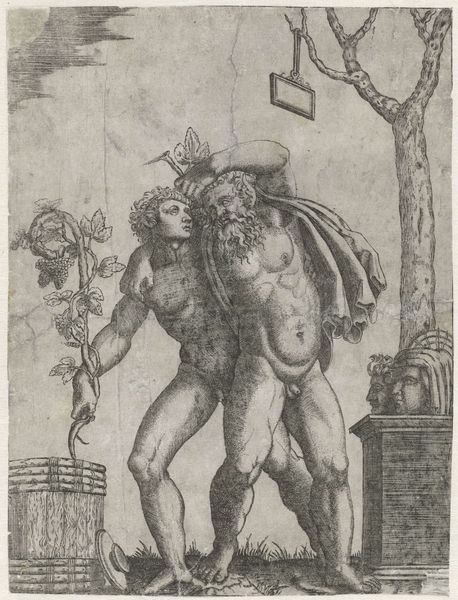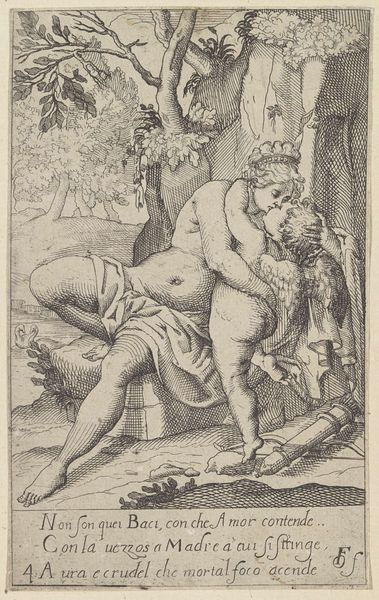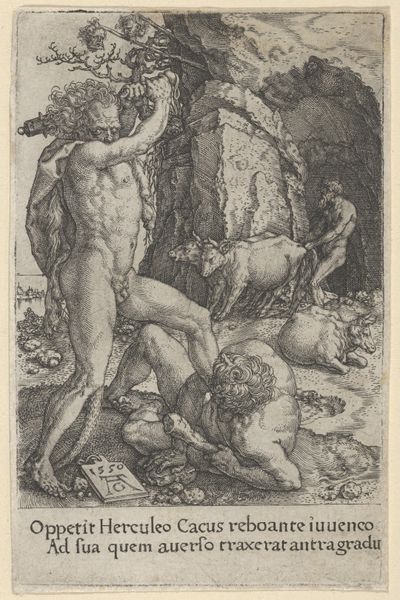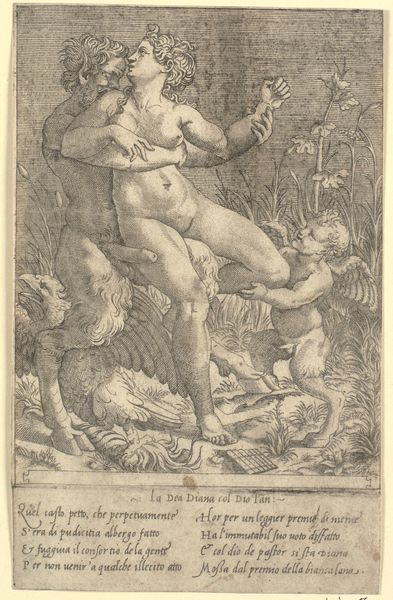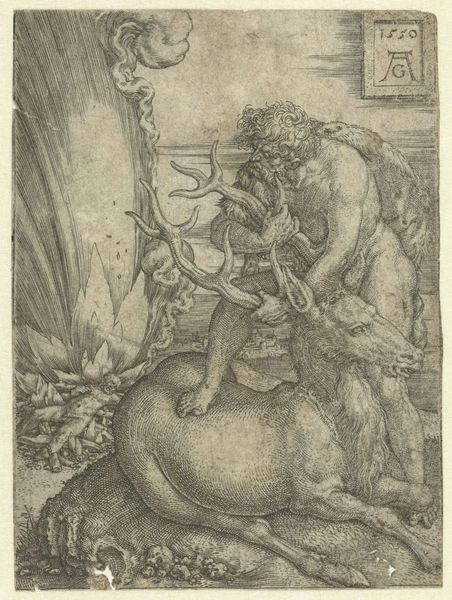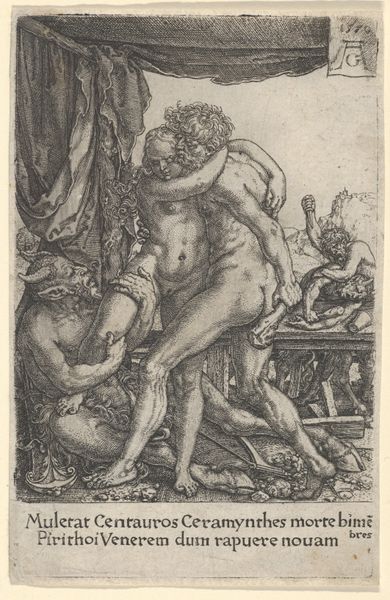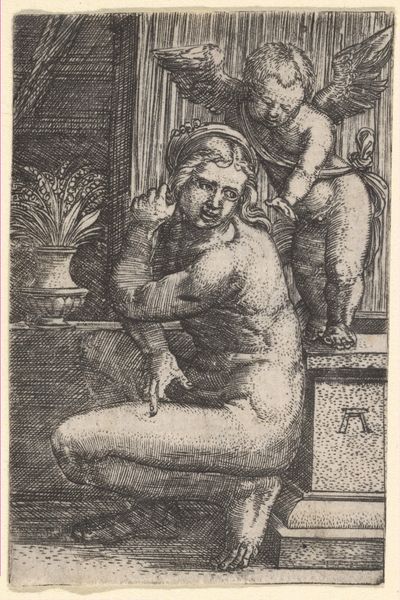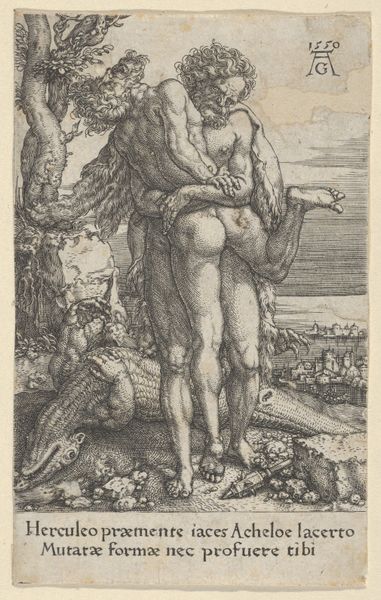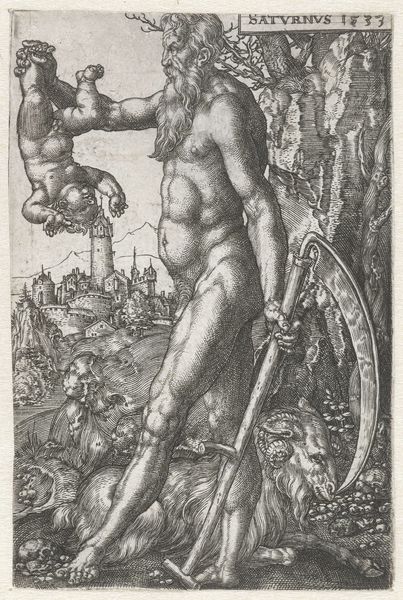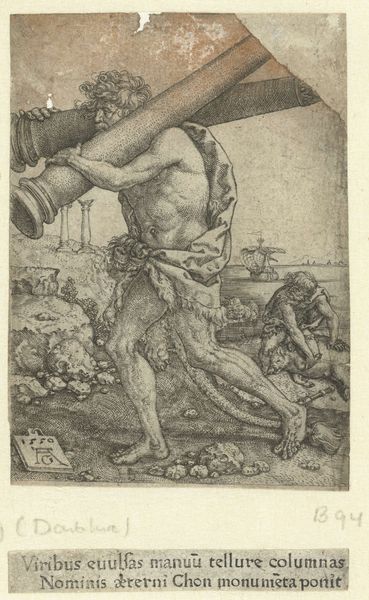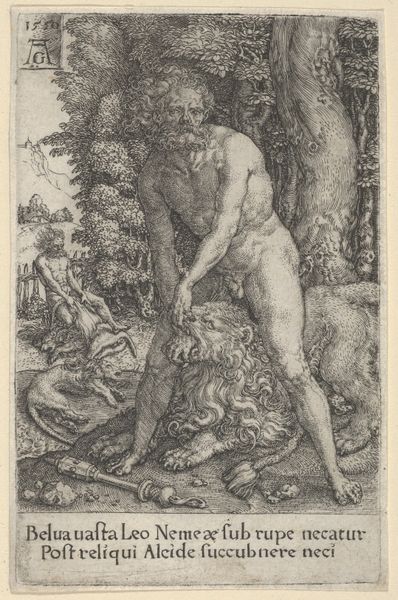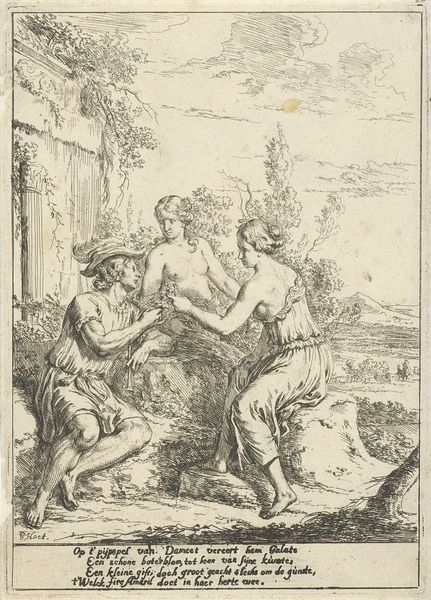
Hercules Killing the Dragon Ladon, from The Labors of Hercules 1550
0:00
0:00
Dimensions: Sheet: 4 5/8 × 3 1/4 in. (11.8 × 8.2 cm)
Copyright: Public Domain
Curator: This dynamic engraving, created by Heinrich Aldegrever around 1550, depicts Hercules slaying the dragon Ladon. It's part of a series illustrating the Labors of Hercules, currently housed at the Metropolitan Museum of Art. What strikes you most about it? Editor: The sheer ferocity! The dense crosshatching heightens the tension of the combat. Ladon's contorted body and Hercules' determined stance really give a sense of brutal struggle. There's something archetypal here, wouldn't you say? Curator: Absolutely. The image of a powerful figure dominating a monstrous entity taps into so many cultural narratives of dominance. We could deconstruct this power dynamic to ask what symbolic function does the vanquishing of the "monster" play? Who does this narrative benefit and who does it marginalize? Editor: Fascinating point. Dragons, or serpent-like forms, are near universal symbols for chaos and the unknown, the feminine even. So, Hercules here could be seen as embodying the civilizing force, suppressing wild, untamed nature. Curator: Exactly. And consider Aldegrever’s social context. This piece emerged during a time of religious and political upheaval. Representing Hercules, a symbol of masculine strength and order, conquering a serpentine “other” might be viewed through the lens of solidifying patriarchal norms. The composition's focus on male strength contrasts the dragon as a monstrous distortion of natural order. Editor: The imagery does lend itself to that. The positioning of the tower also captures my attention. In my experience towers often signify aspiration but also vulnerability, even imprisonment. Here, it's as if Hercules protects or defends the established order. Curator: It brings up important questions about what the established order truly represents, and what is being sacrificed to maintain it. Looking at it now, I can’t help but view Hercules, not as the hero, but as an imposing, and potentially destructive force, which leads me to also question if the image speaks to an ambivalent and critical gaze toward power? Editor: It does give us a great deal to think about! Thank you for offering a contemporary understanding of such symbolic artwork. Curator: My pleasure. And thank you for offering your insight into the symbols and archetypes at play within Aldegrever’s striking print.
Comments
No comments
Be the first to comment and join the conversation on the ultimate creative platform.
